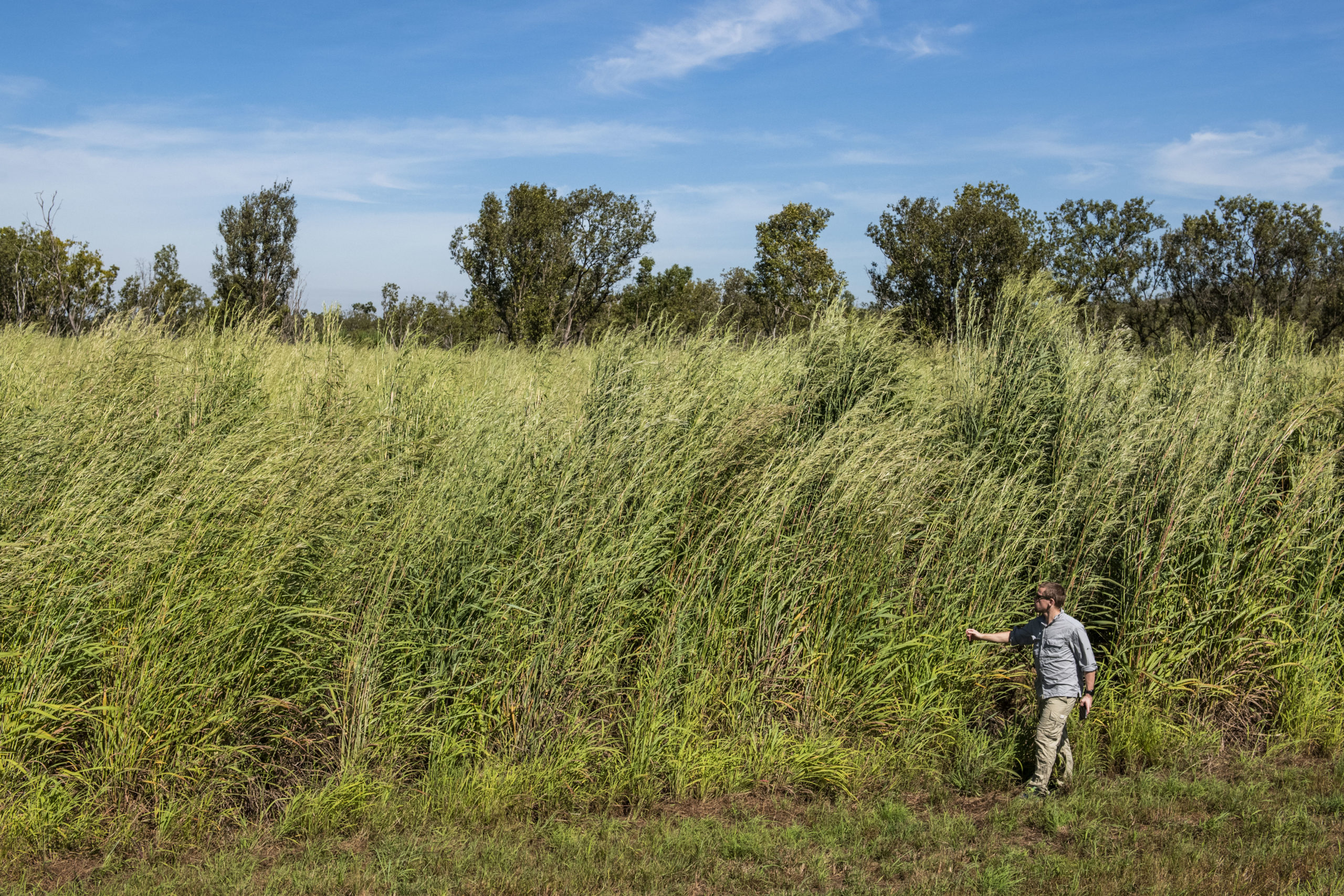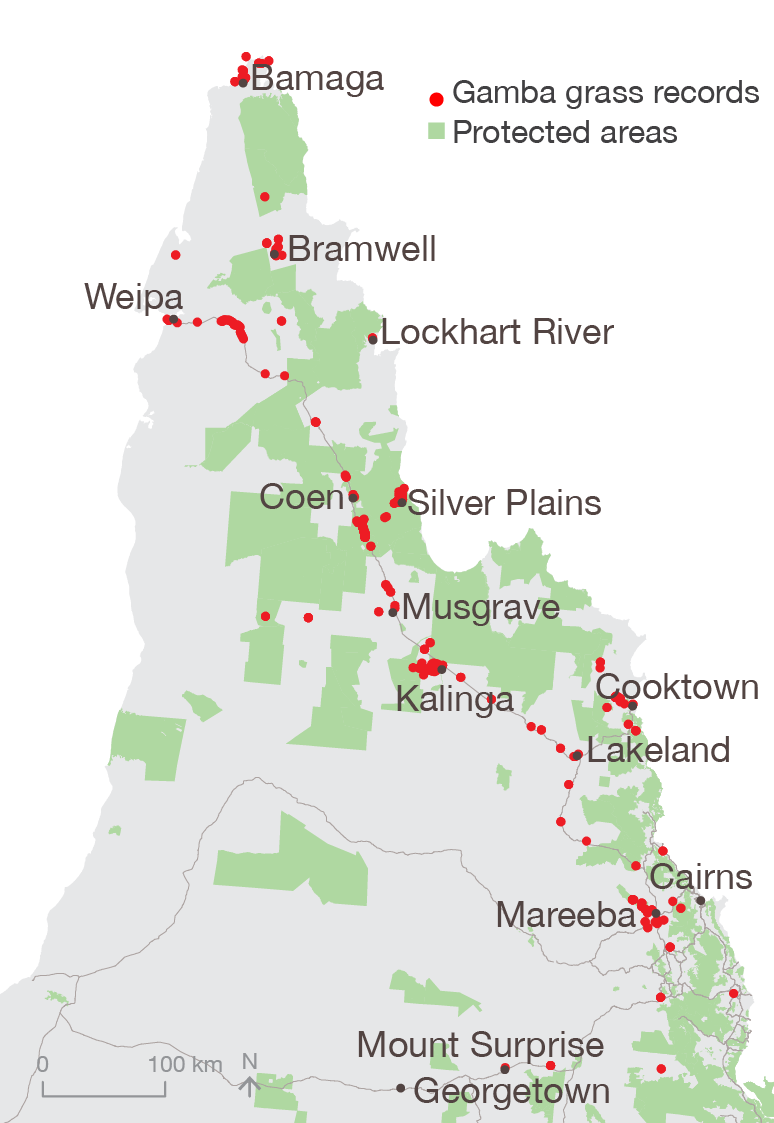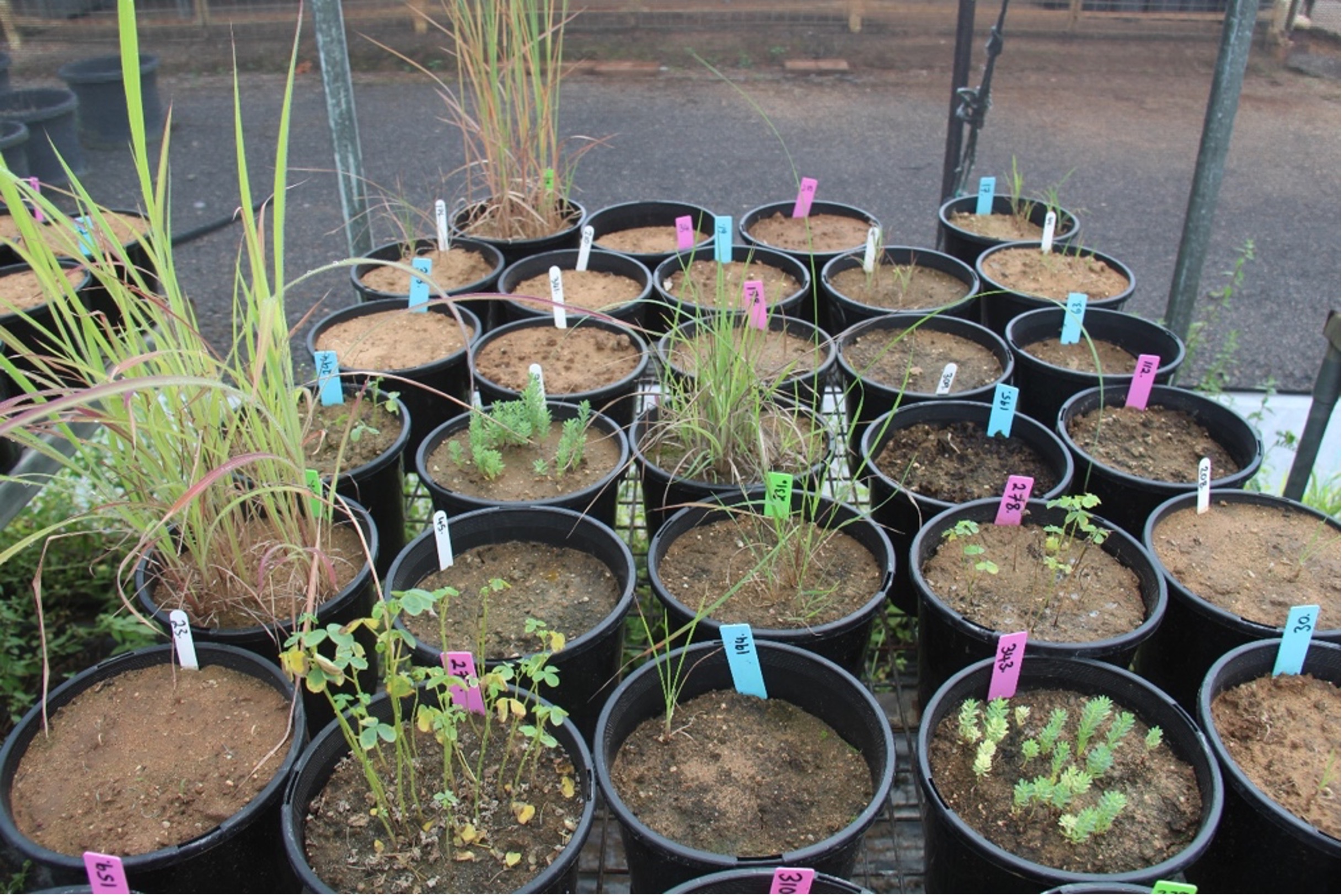9 November 2021
Gamba grass (Andropogon gayanus) was introduced to Australia as a pasture grass from Africa. It has become a significant environmental weed and is considered an ecosystem transformer, posing multiple threats to the savanna ecosystems of northern Australia. Of particular importance is its capacity to increase fuel loads, resulting in intense fires that may subsequently lead to permanent transformation of the structure and diversity of the ecosystems it invades. Gamba grass continues to spread through the Northern Territory, Queensland and Western Australia.

Gamba grass can grow up to 4 metres tall and transform native savannas. Photo: NESP Northern Hub.
One of the major problems limiting the effective management of gamba grass once it’s established as an environmental weed is the lack of registered herbicides for use in natural systems and conservation areas. This Hub project, led by researchers from CSIRO, sought to determine whether there was a suitable alternative to glyphosate, currently the most commonly used herbicide, that selectively controls gamba grass with low off-target effects on native vegetation.
There are numerous logistical issues with the widespread use of glyphosate in the north – application relies on large, heavy and expensive spray equipment as well as access to clean water which can be difficult to manage in remote areas. The herbicide must be applied during the hot and rainy growing season which often limits or prevents access.
Additionally, glyphosate has no residual action, its effectiveness relies on follow-up treatments and there are emerging resistance issues. Alternative herbicides are critical as insurance against future limitations on the use of glyphosate, to combat resistance, and to allow effective, timely control in the ecosystems of Cape York Peninsula and across northern Australia.

Gamba grass can spread quickly, threatening assets such as protected areas. Gamba data from ALA 2018. Protected area data from CAPAD 2016.
Key findings
You can read more about the findings in the wrap-up on the project page or in the project’s final report.

Various pots of gamba and native plants at 13 weeks after treatment. Photo: Queensland Department of Agriculture and Fisheries.
Want to know more about the Resilient Landscapes Hub's activities and our research into practical solutions to environmental problems? Stay informed about activities, research, publications, events and more through the Hub newsletter.
"*" indicates required fields